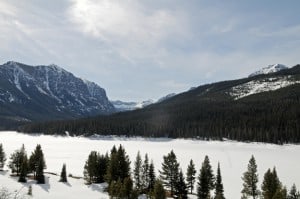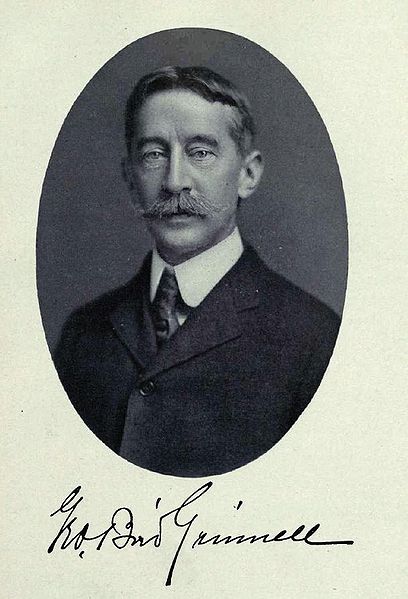
Thanks to Derek for these.
Here’s an editorial from the Bozeman Chronicle:
Editorial: Protecting Bozeman’s water supply is our best long-term plan
Posted: Sunday, January 22, 2012 12:00 am
Right on cue, a trio of environmental groups has again challenged a plan to protect the main Bozeman municipal water sources from catastrophic wildfire.
The plan calls for treating 4,800 acres of the Hyalite and Sourdough creek drainages with timber harvests, thinning and controlled burns to reduce the amount of potential fuel for a wildfire that will certainly burn through the area at some point in the future. A catastrophic fire in these drainages in their present condition would produce ash and silt and trigger erosion that could overwhelm the city’s water system.
Challenging the proposal for the third time, The Alliance for a Wild Rockies, the Montana Ecosystem Defense Council and the Native Ecosystem Council contend the plan will disrupt lynx and grizzly habitat and eliminate cover for elk.
Though it will probably fall on deaf ears, here’s a different argument to consider for abandoning this challenge:
People are moving to Montana. They are buying up what was once agricultural land and turning it into housing developments. Much of the open space we all value so much as part of our quality of life is being consumed in the process.
The best way to combat this trend is to concentrate this immigration of new Montanans as much as possible – in cities. Bozeman is the best location on the northwest corner of the Yellowstone ecosystem – among blue-ribbon trout rivers and in between major wilderness areas – to accommodate as much of this population growth as possible.
To do that, though, the city needs water. And protecting the city’s primary sources of potable water is one of the best ways to ensure that Bozeman can accommodate smart growth. If the environmental groups hamper the city’s ability to maintain and increase its water supply, they will be forcing new population out into the countryside where more valuable open space will be consumed.
Make no mistake: Montana’s population is going to grow, whether we like it or not. And it is incumbent upon the state’s cities to accommodate that growth by building up, not out.
Environmental groups can help the cities accomplish this by working with them – not against them – as they seek to responsibly protect and expand their municipal water supplies.
Here’s an article from earlier in the week.
Conservation groups challenge watershed plan for third time
CARLY FLANDRO, Chronicle Staff Writer | Posted: Wednesday, January 18, 2012 12:15 am
Conservation groups on Tuesday challenged a proposed thinning and prescribed-burn project in forests south of Bozeman that aims to protect the city’s drinking water.
It’s the group’s third time challenging the proposal.
“Simply stated, the agency’s proposal breaks a number of laws and this time around is no different,” said Michael Garrity, executive director of the Alliance for the Wild Rockies.
The Gallatin National Forest’s plan, called the Bozeman Municipal Watershed project, calls for burning, harvesting and thinning 4,800 acres in the Hyalite and Bozeman Creek drainages. Those drainages supply more than 80 percent of the Bozeman community’s water, and thinning efforts there are intended to reduce the extent of any potential wildfires.
A severe wildfire could put so much sediment and ash in the creeks that the treatment plant couldn’t handle it and would have to shut down, according to Marna Daley, forest spokeswoman.
Montana Ecosystem Defense Council and Native Ecosystems Council joined the Alliance for the Wild Rockies in challenging the plan.
The groups say the project would log federally designated lynx critical habitat and core grizzly bear habitat, and that it would remove elk hiding cover and destroy habitat for other old-growth-dependent species. They also worry the logging and road building would add sediment to creeks containing the native westslope cutthroat trout, which is listed as a “species of special concern.”
“Those same creeks also supply Bozeman’s municipal water,” said Steve Kelly, a board member for two of the conservation groups. “The best thing we could do for wildlife, fish, opportunities for backcountry recreation and solitude, and our drinking-water supply, would be to back away from this foolish project and enjoy the forest’s many enduring gifts.”
Garrity also alleged that some areas affected by the plan have been inaccurately designated as wildland-urban interface zones.
Daley said she has not yet seen the challenge but said the Gallatin National Forest is committed to moving forward with the project.
“We’re very confident the decision is a good decision,” she said of the most recent proposal. “We look forward to moving toward the implementation of the project in the near future.”
Daley said the challenge will go to the regional forester for review, and he’ll decide in about six weeks whether to uphold the forest’s plan.
The city of Bozeman partnered with the Gallatin National Forest to produce the watershed plan.
It’s interesting to me that we’re only hearing one side of the story from the article..
For the curious, here’s the site of information on the project, including a video.
Here’s a part of the ROD about sedimentation
Sedimentation concerns from our actions or no action
The Forest fuels specialist and hydrologist modeled the current vegetative and fuels conditions in the two drainages, and showed that a wildfire in average humidity and wind conditions could generate an increase in sediment of 250% over natural conditions (FEIS, p 3-40). A wildfire in more extreme weather conditions could cause even higher increases in sedimentation. The City of Bozeman water treatment plant currently can handle only small increases in sediment and ash and certainly not levels modeled for a wildfire under moderate or more extreme conditions.
Our effects analysis also showed that the vegetation treatments in Alternative 6 could reduce potential fire size by 54% when a wildfire occurs in the project area (FEIS, p 2-29 and p 3-29). Further analysis showed that a 4,000 acre fire in the project area after implementation of Alternative 6 would likely increase sediment 30% above natural in the Hyalite Creek drainage, and increase sediment 54% above natural in the Bozeman Creek drainage. The same size fire without treatment would produce sediment increases of 56% and 105% in those same drainages, respectively (SFEIS p. 172). A 2,000 acre fire after implementation of Alternative 6 is predicted to increase sediment by 18% over natural in Hyalite Creek and 32% in Bozeman Creek versus 31% and 57%, respectively, without treatment. The Bozeman Municipal Water Treatment plant is challenged to efficiently treat water when sediment levels exceed even 30% over natural, so 50% or greater increases could result in multiple day reductions in plant efficiency. This analysis convinced me that Alternative 6 will be effective in meeting the purpose and need for the project, and that the no action alternative, is not acceptable when the drinking water of an entire community is at stake.
Maybe I’m missing something, but if seeking safe drinking water makes people “break laws”, then what would be the proposal to meet the purpose and need that would not “break laws”?; if there is no such proposal conceivable, then it would appear that something is wrong with our framework with laws and regulations (or case law)..










